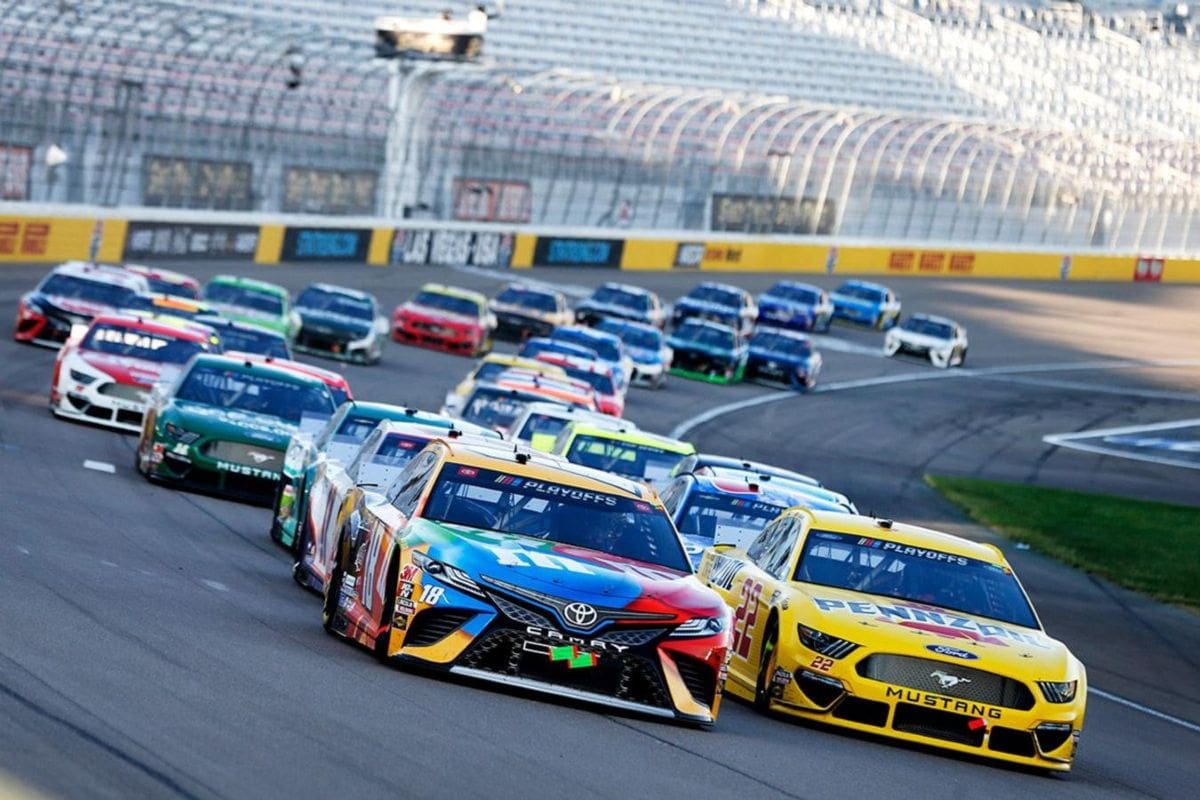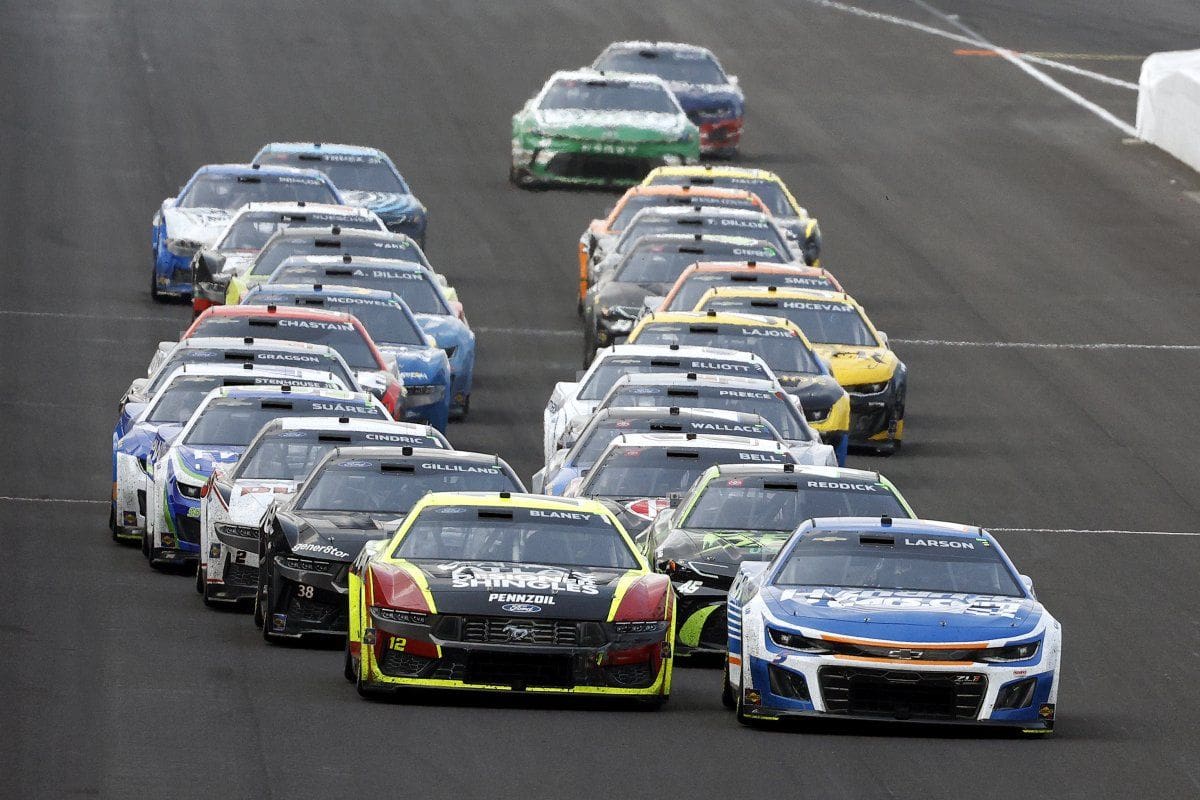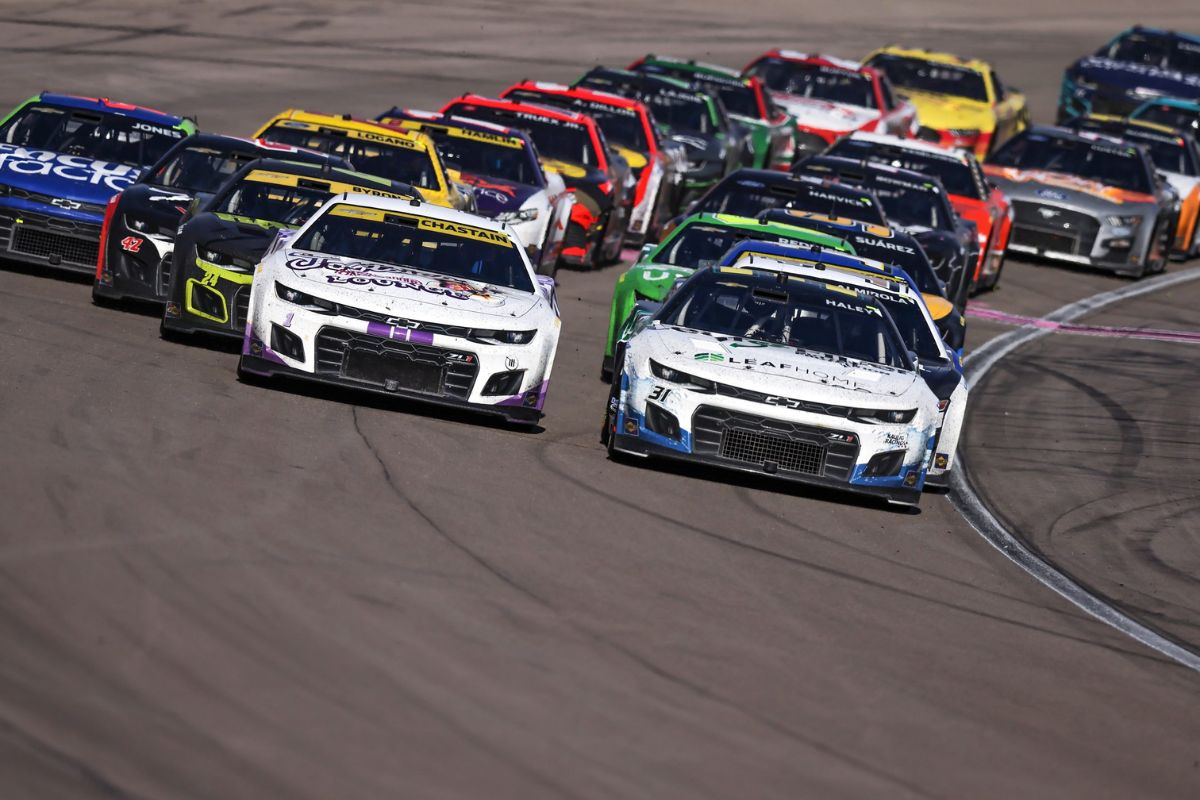Michael Jordan’s NASCAR Dream: The recent commentary by Dale Earnhardt Jr. regarding the escalating value of NASCAR charters, potentially reaching $125 million, reveals critical dynamics within the sport, particularly for teams like Michael Jordan’s 23XI Racing. This projection not only reflects the financial implications of ongoing charter disputes but also raises questions about the competitive landscape and the viability of team operations amid fluctuating valuations. As discussions about charter security intensify, the implications for team stability and the general marketability of NASCAR warrant closer examination, particularly in regard to Denny Hamlin’s insights on these evolving challenges.
Key Highlights
- Michael Jordan’s NASCAR team charters are valued between $20 to $25 million, with potential appreciation to $125 to $150 million in five years.
- The charter dispute raises concerns about long-term sustainability and financial stability for teams like 23XI Racing.
- Negotiations aim to address equity issues within the charter system, impacting competitive balance and revenue-sharing models.
- Successful resolution of charter negotiations could enhance the sport’s marketability and stabilize revenue for teams, including Jordan’s.
- The urgency for agreement increases as a four-month deadline approaches, emphasizing the need for clarity in future planning.
Potential Charter Loss for 23XI Racing and Front Row Motorsports
Amid ongoing negotiations and tensions within the NASCAR framework, 23XI Racing and Front Row Motorsports face the potential loss of their charters, a situation that could have notable implications for both teams and the broader competitive landscape.
The decision of these teams to abstain from signing the charter deal stems from concerns over the sport’s long-term sustainability, prompting a demand for fair negotiations. This stance, particularly adopt by 23XI Racing’s co-owners Michael Jordan and Denny Hamlin, highlights a significant dialogue about fairness and viability within NASCAR.
The refusal to sign the charter agreement indicates a planned shift, as both teams assert their desire for a more inclusive and transparent operational environment. Equitable governance, they challenge the traditional power structures often dominated by legacy teams.
Reports have emerged suggesting that legal action could be pursued if the France family, which oversees NASCAR, attempts to assert control over their charters. Such a move would not only escalate tensions but also set a precedent for future negotiations between NASCAR and its teams.
Despite the current friction, Dale Earnhardt Jr. has posited that this discord may ultimately become growth and opportunity within the sport, suggesting that the disruption could encourage a reevaluation of existing frameworks.
As the situation evolves, the outcomes of these negotiations will likely redefine competitive dynamics and influence the operational landscape of NASCAR. The potential loss of charters for 23XI Racing and Front Row Motorsports emphasizes a crucial moment in the ongoing evolution of the sport.
Dale Earnhardt Jr.’s Prediction on Charter Value
Dale Earnhardt Jr. offers a compelling perspective on the future value of NASCAR charters, suggesting that their worth is poised for substantial appreciation. His insights indicate a strong belief that the current valuation of Cup team charters, estimated between $20 to $25 million, is likely to increase markedly in the coming years.
Earnhardt Jr. references the notable sale of Michael Jordan’s majority stake in the Charlotte Hornets for $3 billion, highlighting the disparity in investment attractiveness between NBA franchises and NASCAR charters.
He asserts that the ongoing disputes, particularly between NASCAR and 23XI Racing, could catalyze the establishment of a more equitable financial model that would incentivize investment in the NASCAR ecosystem.
Earnhardt Jr. emphasizes that meaningful change is imperative for teams to realize their growth potential, stating, “So 23XI believes that, but they can’t get that growth potential unless NASCAR creates that value for them in this new agreement.”
His projection that charters could reach values of $125 to $150 million within a short timeframe—potentially five years—reflects a calculated optimism. He posits that such growth is not merely aspirational but rather a reasonable path for team owners.
“I will not be shocked if the charters at one day down the road, maybe in a very short period of time, it might be five years, $125 or $150 million dollars. That is to me reasonable; if you’re an owner, that’s a reasonable trajectory…They’re not going to take away Michael Jordan’s charters, never. They’re going to try their hardest,”-(dale earnhardt jr)
Additionally, he confidently asserts that NASCAR will protect existing charters, particularly those associated with high-profile owners such as Michael Jordan, which speaks to the increasing importance and potential of charter ownership in the evolving landscape of NASCAR.
NASCAR’s Initial Charter Approach and Future Considerations
The increasing valuation of NASCAR charters, as highlighted by Dale Earnhardt Jr., raises questions about the initial framework established by NASCAR for its charter system. Originally, NASCAR refrained from adopting a franchise model akin to other major sports leagues, aiming instead to create a system that guaranteed teams a starting position in races while also providing equitable access to television revenue. This foundational approach was intended to maintain a level of competitive balance and guarantee that all participating teams could remain financially viable.
However, as the market dynamics shift and the value of these charters escalates—potentially reaching figures like $125 million—the original design faces scrutiny. The charter system’s intention to foster inclusivity may inadvertently lead to stratification, where a select few teams capitalize on their high valuations, creating barriers for new entrants or less financially robust teams. This concern highlights the tension between maintaining a competitive field and the allure of lucrative financial opportunities.
Looking forward, NASCAR may need to reconsider its charter approach to address these emerging challenges. Potential adjustments could include revising revenue-sharing models or implementing measures to stabilize charter values, thereby guaranteeing that the competitive integrity and spirit of the sport are preserved.
As the landscape evolves, NASCAR’s strategies will need to adapt, balancing the interests of established teams with the necessity of fostering an inclusive and competitive environment for all participants.
Denny Hamlin’s Perspective on Charter Value
From Denny Hamlin‘s perspective as a co-owner in NASCAR, the escalating value of charters presents considerable challenges that extend beyond mere financial considerations. His assertions highlight a fundamental disconnect between the league’s revenue structure and the teams’ financial realities.
Hamlin articulates a critical point: “Who spends the money? That’s the teams.” This statement emphasizes the burden placed on teams to cultivate sponsorships and generate revenue, yet they find themselves undervalued in the broader economic landscape of NASCAR.
“Who spends the money? That’s the teams. Whose sponsors go buy a suite? That’s the teams. Whose sponsors activate in their midways? That’s the teams. That’s the tough part that they just don’t value us.-(hamlin)”
The historical context of team attrition in the sport paints a vivid picture. Iconic entities like Chip Ganassi Racing and Furniture Row Motorsports have succumbed to financial strains, while even established teams like Stewart Haas Racing are contemplating exits.
This trend raises alarms regarding the sustainability of team operations amid rising charter values, which, according to Hamlin, do not reflect the contributions teams make to the sport’s total profitability.
Moreover, Hamlin’s observation that sponsors are integral to the sport’s vibrancy—“Whose sponsors go buy a suite? That’s the teams”—highlights the critical role teams play in driving engagement and revenue streams.
The crux of Hamlin’s argument is a plea for NASCAR to acknowledge this reality and to devise an equitable economic framework that not only rewards teams but preserves the competitive landscape of the sport.
Without such recognition, the viability of teams and, by extension, the future of NASCAR could remain uncertain.
Ongoing Negotiations and Future Resolution
Amid the backdrop of escalating charter values and mounting demands on teams, ongoing negotiations between NASCAR and 23XI Racing highlight the complexities of the current landscape. The stakes are high, with 23XI Racing potentially facing considerable repercussions should they fail to finalize the charter agreement. While the possibility of losing their charters looms, the two parties have a four-month window to reach a resolution, which could ultimately dictate the future dynamics of the NASCAR series.
The negotiations are fueled by the desire of both NASCAR and 23XI Racing to maintain competitive integrity while also maneuvering financial implications. The charter system was designed to stabilize team revenues, yet disagreements over the terms reflect deeper issues regarding equity and sustainability within the sport.
| Aspect | NASCAR Position | 23XI Racing Position |
|---|---|---|
| Charter Value | Increasing value | Seeking fair terms |
| Financial Stability | Focus on team revenues | Concern over costs |
| Competitive Balance | Maintaining parity | Desire for equitable advantage |
| Deadline for Agreement | Four months remaining | Urgency for resolution |
| Future Implications | Long-term viability | Risk of losing charter |
As the negotiations unfold, both sides must maneuver not only the immediate financial realities but also the broader implications for the league’s structure and competitive landscape. A successful resolution could strengthen team confidence and improve the sport’s marketability, while failure to agree may disrupt the delicate balance of interests within NASCAR. Consequently, the coming months will be critical in shaping the future of 23XI Racing and the NASCAR framework as a whole.
News in Brief: Michael Jordan’s NASCAR Dream
The projected increase in charter values to $125 million demonstrates the complexities and stakes involved in the ongoing charter dispute within NASCAR. As teams like 23XI Racing navigate these challenges, the need for a resolution becomes critical to guarantee financial sustainability and competitive balance. The perspectives of industry figures, including Dale Earnhardt Jr. and Denny Hamlin, emphasize the significance of these negotiations in shaping the future landscape of the sport and its marketability.
ALSO READ: Michael Jordan Fights Alone Against NASCAR Giants After Hendrick and Penske Surrender



